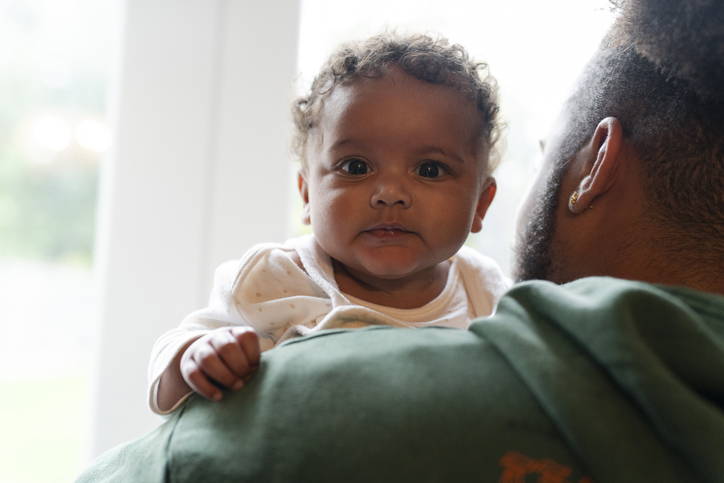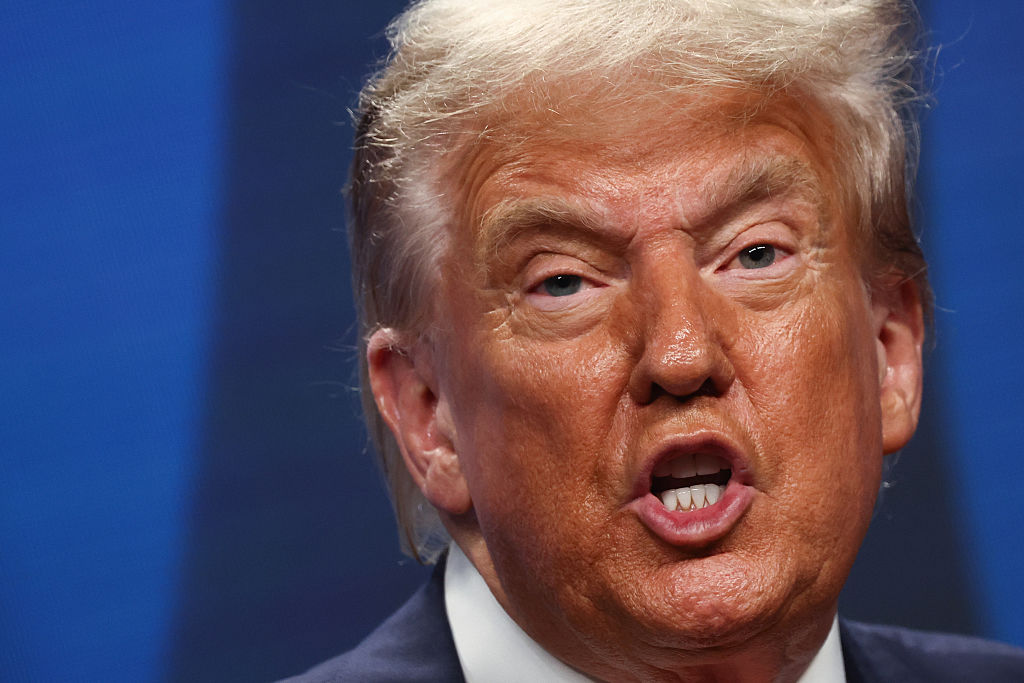White Bodies Protesting In The Age Of Trump
With the election of Donald Trump and his appointment of White Nationalist-in-chief Steve Bannon, the religious right and White supremacists have left their homes in the suburbs and trailer parks to stand firm with the president and his cabinet.
White nationalism, which had moved from the forefront after the civil rights movement, returned with a vengeance during the presidency of Barack Obama. And the re-inscription of the White male patriarch—if not the planter—in American politics, strikes a note of protest from those who have been brutalized by White cisgender heterosexual men.
As a result, White women have taken to the the streets in untold numbers to fight for women’s rights, protest against Trump’s infamous Muslim travel ban and against the president’s assault on Obamacare. But the White affective or emotive responses have nothing to do with Black or brown people getting free.
The valorization of whiteness
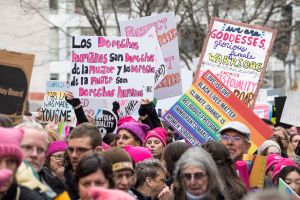
Source: Barbara Alper / Getty
Instead, the reactions have more to do with White people losing what legal scholar Cheryl Harris describes as “the valorization of whiteness as treasured property in a society structured on racial caste” in her widely-cited 1992 article, “Whiteness as Property.”
Instead, the reactions have more to do with White people losing what legal scholar Cheryl Harris describes as “the valorization of whiteness as treasured property in a society structured on racial caste” in her widely-cited 1992 article, “Whiteness as Property.”
White women and White men are afraid of not being “propertized” with Whiteness in a rapidly changing, neoliberal, multicultural nation, where the propertied, or the marginalized, dare to proclaim, “please don’t shoot me dead, I have my hands on my head” or “Black Lives Matter” or even “#NoDAPL.”
Some White people, or more specifically those White liberals who say “nigga” behind closed doors, are angry that Trump is staining what Whiteness symbolizes in a White supremacist nation in love with White phallic symbols of power on the national mall.
Others, such as those who say “nigger” at conservative rallies, are titillated by the circle jerk of White male dominance, wherein White men objectify women’s bodies while also denying women the right to choose, the right to say yes, or even the right to say no. For instance, I once heard a White man say, “Trump is going to give us what we’ve long been owed.”
The ahistorical narrative of White feminism
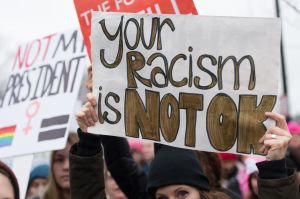
Source: Steve Exum / Getty
On January 21, 2017, a day after Trump’s inauguration, the Women’s March took place. Though women of color were part of the planning and execution of the main march in Washington, D.C., and across the nation, White women, by and large, have dominated the discourse around the anti-Trump activism. Many have been portrayed as the face of the women’s rights movement.
But this ahistorical narrative is not new. Black feminist historians have long documented the legacy of racial and gender justice among Black women, such as Beverly Guy-Sheftall’s Words of Fire: An Anthology of African American Women’s Thought, which debunks claims of “feminism” as a solely White woman enterprise.
Still, the anti-Trump protests denounce the old time revival of White male toxicity that has been violently scary for women, Black and brown people, Muslims, and queer and transgender citizens. The environment allows for a proliferation of sexual violence, transgenderphobia, anti-choice, misogyny and anti-blackness offensives. Indeed, White men, and the White women who stand by them, invoke racialized gender violence and xenophobia for the sake of preserving Whiteness.
A New York Magazine article, for example, highlights troubling slogans sported by mostly by White men at pro-Trump rallies during the presidential campaign and counter protests against the candidate. Among them, “Don’t be a pussy, Vote for Trump” and “Better to grab a pussy, than to be one.”
Snatching the power of protests from people of color
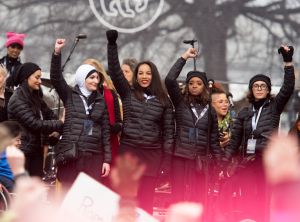
Source: Noam Galai / Getty
In further testament of the valorization of whiteness as treasured property, the mainstream media have deemed the White women’s marches to be “peaceful” and “cooperative,” so much so that there were videos circulating of police officers shaking hands and hugging White women protestors. Similarly, pro-Trump protestors have not been called “thugs,” but in Ferguson and Baltimore, protestors were called “thugs” and “looters,” and demonized for visibilizing Black rage, and the BlackLivesMatter movement.
At a time when White nationalists and White liberals are filling the streets, what remains clear is that White people are doing very little to end the oppression of Black bodies from police and economic violence.
Instead, both groups have snatched the power of protests from people of color, and repackaged them as “peaceful.” But it’s not real peace. Peace comes when there is justice for the oppressed. Peace emerges when little Black children can sleep at night without being murdered by SWAT, and when Latino children do not have to fear being separated from their parents by xenophobes. Peace comes when White folks deconstruct Whiteness. That’s real peace.
Ahmad Greene-Hayes is a doctoral student in the Departments of Religion and African American Studies at Princeton University. He also currently serves as an inaugural cohort fellow of the Just Beginnings Collaborative (2016-2018), where his project, Children of Combahee works to eradicate child sexual abuse in Black churches. Follow him @_BrothaG.










